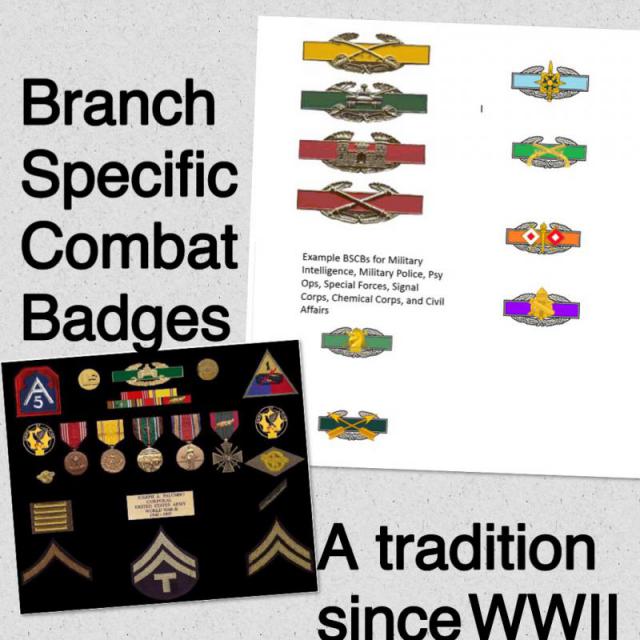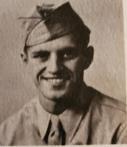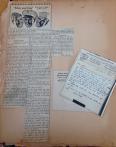I believe it's time we honor all combat vets by drafting new legislation to create adequate awards for their service outside the wire. I believe that in the United States of America we take pride in our uniformed services and servicemembers. In the past the United States Army has had unofficial traditions that have grown to become apart of the the Army's overall identity. An example of this is the beret, in its many colors, coming and going throughout the ranks of the Army. The beret tradition for the Airborne started in 1943 when the U.S. Army's 509th Parachute Infantry Regiment was awarded honorary membership in the British Parachute Regiment and authorized to wear the British-style maroon berets. During the Vietnam War, U.S. military advisers to Vietnamese airborne units often wore the Vietnamese French-style red berets. The green beret links its history to the British Commandos of World War II. The first Ranger unit, Darby's Rangers, was created in Northern Ireland during the summer of 1942. Upon completion of their training, the Rangers had the right to wear the British Commando green beret, but it was disallowed by the Army. In 1952 Special Forces soldiers of the 10th Special Forces Group wore berets of many colors. In 1953 a rifle-green beret was chosen for wear by Special Forces units. In 1956 the wear of the green beret was banned even though it was worn by Special Forces units when they were in the field or deployed overseas. It wasn't made the official headgear of the units until 1961, but both the maroon and black berets were still being unofficially worn by soldiers throughout the Vietnam War. In the post-Vietnam era, soldiers were experiencing an overall loss of morale in the U.S. Army. In response, from 1973 through 1979, the Army permitted its local commanders to encourage morale-enhancing uniform distinctions. The unofficial traditions of uniform distinctions helped to boost morale amongst the soldiers. This led to the black berets becoming an official part of the Army uniform for Rangers in 1975 and maroon berets for Airborne units in 1980.
Skill badges in the past have faced the same uphill battle as the beret in the Army. An example of this is the Riggers Badge. First created in 1948, the badge was used in operations in 1950. However, the badge wasn’t officially recognized by the Army until 1986. With the headgear and badges comes the pride that one takes in their corps when they don their beret or pin on their skill badge. These items now stand as signs that identify these specialized soldiers.
Traditions make our soldiers proud to serve, but I feel that a portion of our servicemembers since WW II have suffered a great injustice in regards to their traditions never becoming recognized by the Army. These soldiers have fought with and fallen on the battlefield alongside the infantry, yet have not received recognition of their sacrifices while in active combat roles. The Army has grown as an organization and adapted its force to the needs of our current conflicts, but the awards have not caught up to the structure of the current operational force.
This injustice was felt by the soldiers around the time of WWII. By the Korean War many started to create unofficial combat badges. In contrast to the Civil War or WWI, it now takes a variety of troops to serve on the lines with jobs mandatory for the infantry to function. The tradition of unofficial combat badges continued into the Vietnam War all the way up until the Global War on Terror. These badges hold a history in the Army that is not well-known but should be. Not even a full decade after the creation of the Combat Infantry Badge in 1943, the American soldiers tried to correct the injustice when they started their new tradition of creating and wearing unofficial combat badges in the same fashion as the CIB to signify their branch of service in combat. In 2004, Congressman Mark Green (R-Wis.), introduced H.R. 3950 to provide for the establishment of a combat artillery badge to recognize combat service by members of the Army in the artillery branch. The bill did not make it out of committee. The Army set out to create an award that was to be called the Close Combat Badge (CCB) that would recognize specific Armor, Cavalry, Field Artillery and Combat Engineer soldiers who served in units purposefully reorganized to routinely conduct infantry-unique close combat missions, but the CCB was never made. The Army, in response to the non-infantry soldiers’ want for a combat badge to identify their sacrifices in war, then decided to create the Combat Action Badge for soldiers of any branch in any unit who enter into “combat” with the enemy. As of now there is a debate as to if the United States of America should award the Combat Action Badge back to the soldiers of the WWII era. I think we should allow for the CAB to be awarded to veterans of the past, but I also feel that the Combat Action Badge is too encompassing and does not demand the same respect as the Combat Infantry Badge.
To solve this problem I propose that we create Branch Specific Combat Badges (BSCBs) that pay homage to the servicemembers who spend their time down range on the battlefield conducting combat operations but who are not serving in an infantry series Military Occupational Specialty.
Being a combat veteran of the war in Afghanistan. I think that it is time that the United States as a nation address all branches within the Army with the same respect that we do the infantry. What I mean is that it is time we make Branch Specific Combat Badges to honor soldiers who serve in active combat roles while deployed. The reason I see the need for the creation of new badges is that a Combat Action Badge only signifies that an individual had been engaged by the enemy. In the past two conflicts in Iraq and Afghanistan, there have been individual soldiers who get the same award for a mortar landing on their base as the non-infantry soldier who spends his days in firefights trudging around on foot patrols in an active combat role. While both of these soldiers were “engaged” by the enemy, their combat situations were starkly different. Let's look at the first soldier. They are relatively safe in a base with bunkers for cover in case they are attacked while doing their non-combat job. Conversely, the second soldier goes on patrols that make them vulnerable to being pinned down by direct fire from an enemy assault team for hours alongside the infantry. In the first scenario we see a person at the hub of the resources for the Army. If a soldier does get hit in the attack, they are able to get immediate medical attention from doctors and even extensive surgeries that could make all the difference in saving a life. The soldiers on big Forward Operating Bases may also be awarded the CAB even if they didn't know they were being attacked. Let's say that only a few rounds landed on the other side of the base and a soldier did not know it happened until after they heard the all-clear come over the loudspeakers; it still does not change the fact that this person still qualifies for a Combat Action Badge even though the threat was so far from them they did not know about it until after it was over. In the second scenario we look at soldiers on Combat Outposts, far away from the resources that are provided on bases such as medical, hard buildings and overwhelming firepower.
Since WWII non-infantry soldiers have found themselves under heavy fire, fighting off invading forces and spearheading combat campaigns as seen in Gen. Patton's advances in Europe leading into the Battle of the Bulge where Patton was credited with saving the soldiers who had been on the line when the battle first started. During the defense of Burauen Airfield, non-infantry soldiers fought off an attacking force of Japanese paratroopers. In the attack at Binh Duong, VC made it past the camp defenses and killed 19 Americans and several ARVN soldiers. At the battle for Firebase Mary Ann, a force of VC sappers overran the camp in the early hours of the morning, killing 33 soldiers and leaving 83 wounded. At the Battle of Ngok Tavak the outpost was overrun, devastating the defending troops. During the Battle of Lang Vai, soldiers were hit with a tank-infantry attack that breeched the wire. There are countless examples from the past, and today we still see the same kinetic situations for soldiers who live on smaller compounds away from Forward Operating Bases. In the war in Afghanistan we have seen Combat Outposts overrun time and time again. At the attack on the Ranch House Outpost, insurgents overran the Afghan Security Guards posts, entering into and attacking positions within the perimeters of the COP. At the Battle of Wanat soldiers were overrun while building a new COP, leaving 9 soldiers dead and 27 wounded. This resulted in Sgt. Ryan R. Pitts, who served as a forward observer and not an infantryman, being awarded the Medal of Honor. At the Battle of Kamdesh 8 soldiers were killed and 27 more were wounded. Once again non-infantry soldiers, both Ssg. Clinton Romesha and Ssg. Ty Carter, were awarded the Medal of Honor for their actions in the defense of the COP. While living on Combat Outposts soldiers face the situation of being pinned down for hours without the troop size necessary to engage offensively. This creates a situation where the COP becomes in danger of being overrun. Combat Outposts host an environment in which every soldier on the COP becomes a rifleman, from the cook to the commanding officer, for the duration of the fight at hand. This situation is more fitting of the Combat Infantry Badge than a Combat Action Badge.
As a combat veteran who has been awarded the Combat Action Badge I can say that for me it is hard to take pride in a badge that is seen as less-than in regards to its placement in the eyes of the Army. Throughout my six years of service I knew multiple soldiers who refused to wear the CAB, feeling that its meaning was diminished because of the loose regulations that award it, and the award being given to people who may have never even have known that they had been engaged. When looking at the order of precedence of the Army skill badges the Combat Infantry Badge is in Group 1 while the Combat Action Badge is in Group 2. This means that soldiers who have both wear the CIB above the CAB, giving people the impression that one badge is better than the other which I feel is false. If the awards are truly equal then you should not be able to wear both together. The fact that you currently can shows the Army’s understanding that the CAB is a lesser award.
For an example of how the CIB and CAB represent the same thing for soldiers in combat roles, I will use an infantry company at a COP. Now imagine you're an 11C, mortarman, in this company that spends most of your days on the COP. You go on patrols here and there, but for the most part you provide support for the other elements that are outside the wire. Let's say you never got in a firefight outside the wire but you did return fire from your mortar tubes at the COP in support of a squad that was - you would still get the CIB. Because as a mortarman, regardless if you were patrolling as a rifleman or not, you are a part of the infantry branch. Now let’s add to the mix a platoon of Cavalry Scouts tasked to be a part of your infantry unit to plus up its numbers. The Scouts go on patrols as riflemen, just as the 11B riflemen that are in the company for the duration of their deployment. The only difference between the Scout and you doing your job as a mortarman is that you are an 11 series and the Scout is not. However, you both acted as riflemen adding to the fight while being assigned to an infantry unit.
Many Combat Arms and Combat Support branches see direct combat and deserve an award that signifies their sacrifices. Your MOS doesn’t mean anything - if you acted as a rifleman you should get the respect that comes with it in regards to your awards. Soldiers attached to an Infantry or Combat Arms unit, such as Civil Affairs and Psy Ops Tactical Teams, Chemical Soldiers, Signal Soldiers, Military Police fulfilling a combat arms role, and Military Intelligence Soldiers to name a few, should also be recognized with Branch Specific Combat Badges as a skill badge listed in Group 1. These soldiers serve and fight in infantry units assigned as the company’s CBRN NCOs, RTOs, forward observers, and other non-infantry roles within the company that are vital for the unit to conduct operations in counterinsurgency.
The U.S. military has spent more than a decade refining how it fights against insurgencies. Through the drafting and rewriting of its doctrinal, strategic and tactical approach to the counterinsurgency (COIN) fight, the Army has began to utilize more unconventional soldiers such as Civil Affairs Tactical Teams that work as an embedded part of the infantry to help accomplish its mission. Branch Specific Combat Badges would distinguish between the combat veterans who spent time fighting on a daily basis from those who may have been engaged but who did not serve in an active combat roles. The creation of Branch Specific Combat Badges would help to recognize soldiers for their sacrifices on the battlefield alongside their infantry counterparts. It would also allow for the creation of a Special Operations Combat Badge. This would allow for operators to earn a badge that would display the type of work they do that goes beyond the scope of the infantry. This would leave the current CAB to be presented to combat service-support soldiers who have been engaged by the enemy in combat zones around the world but do not do it on a daily basis.
I propose that the United States create the Branch Specific Combat Badges to establish a series of badges that are categorized in Group 1 as Army Skill Badges for those who served in combat roles. The Branch Specific Combat Badge should be awarded by any commander delegated authority by the Secretary of the Army during wartime or the CG, U.S. Army Human Resources Command and will be announced in permanent orders. The requirements for award of the BSCB are branch- and MOS-dependent. Soldiers must be assigned or attached to a combat arms unit or a unit organized to conduct close or offensive combat operations, or performing offensive combat operations for the soldier to qualify for the BSCB. I propose specific eligibility requirements as follows:
• May be awarded to any soldier assigned or attached to combat arms units.
• Soldier must be performing assigned duties in an area where hostile fire pay or imminent danger pay is authorized.
• Soldier must be personally present and actively engaging or being engaged by the enemy, and performing satisfactorily in accordance with the prescribed rules of engagement.
• Soldier must not be assigned/attached to a unit that would qualify the soldier for the CIB/CMB.
• Awards would be retroactive to the date of Dec. 7, 1941, for servicemembers who meet the above criteria.
If you also feel it's time we right this injustice feel free to spread the word and ask congress to make BSCBs a reality.

Where credit is due
Bolivar, MO
August 24, 2016
Submitted by:
Kyle Smith




